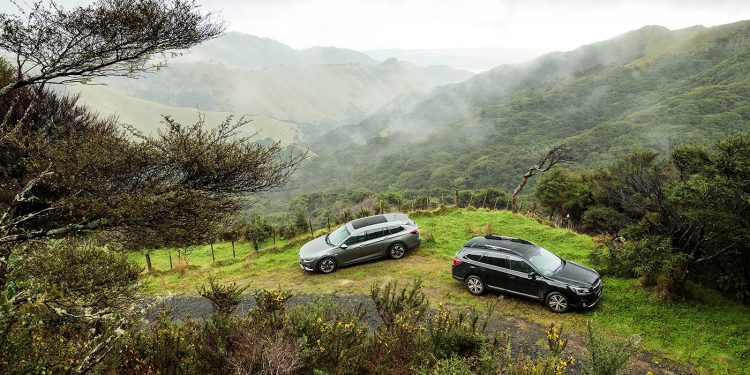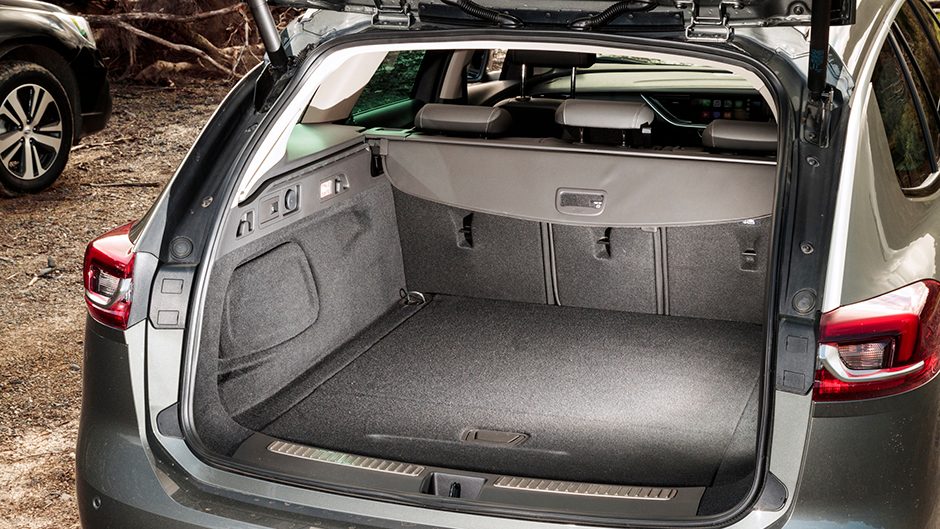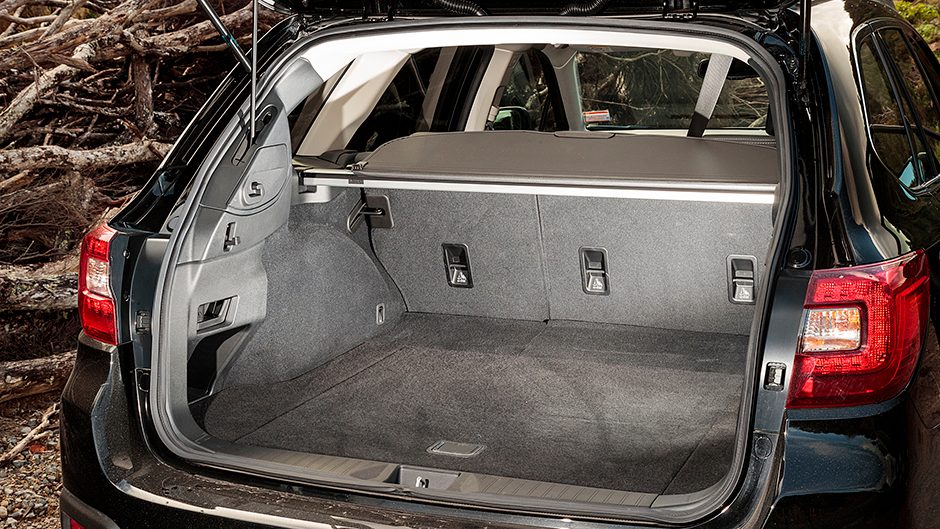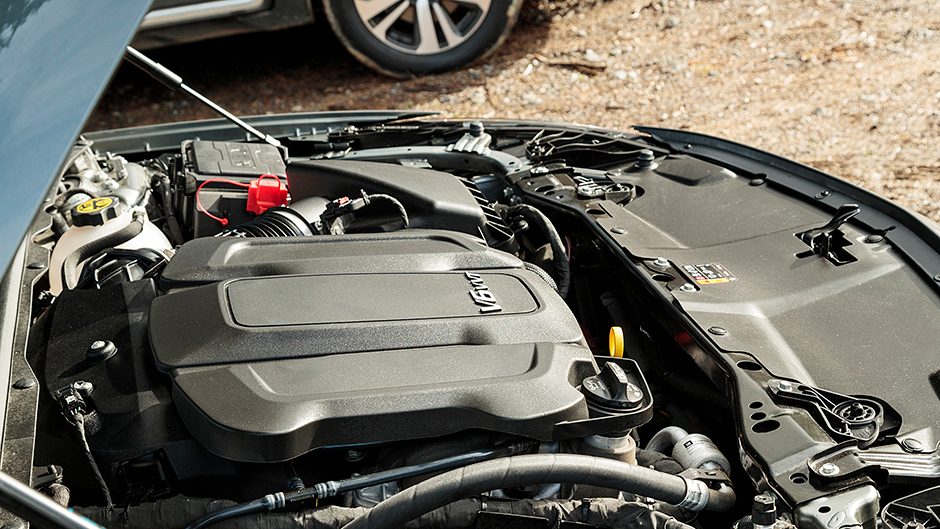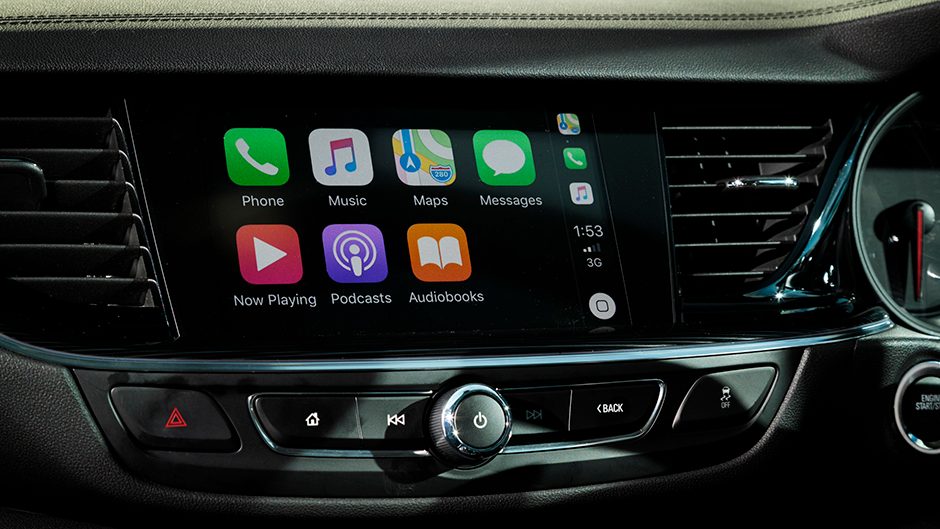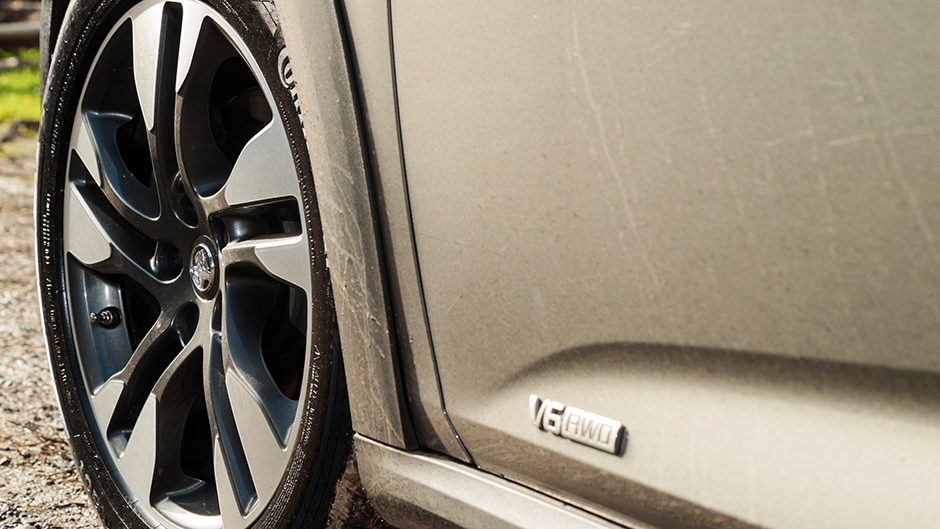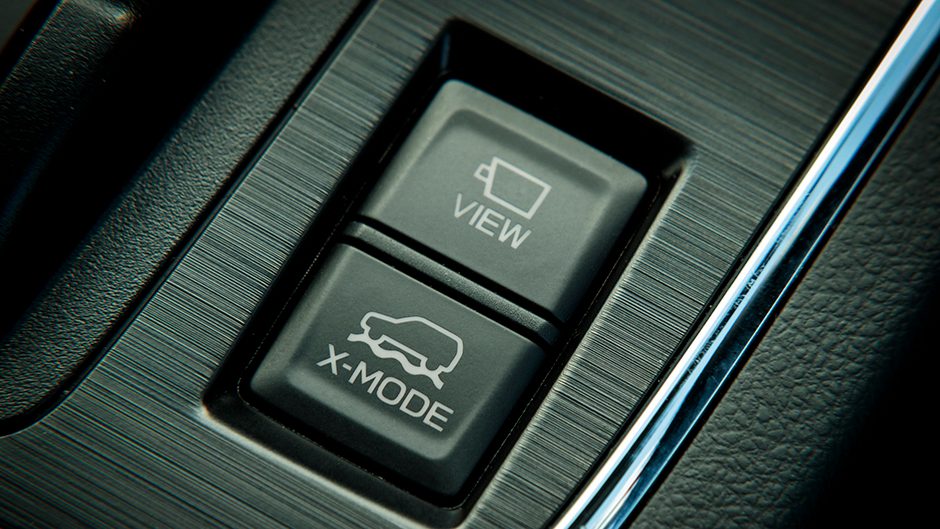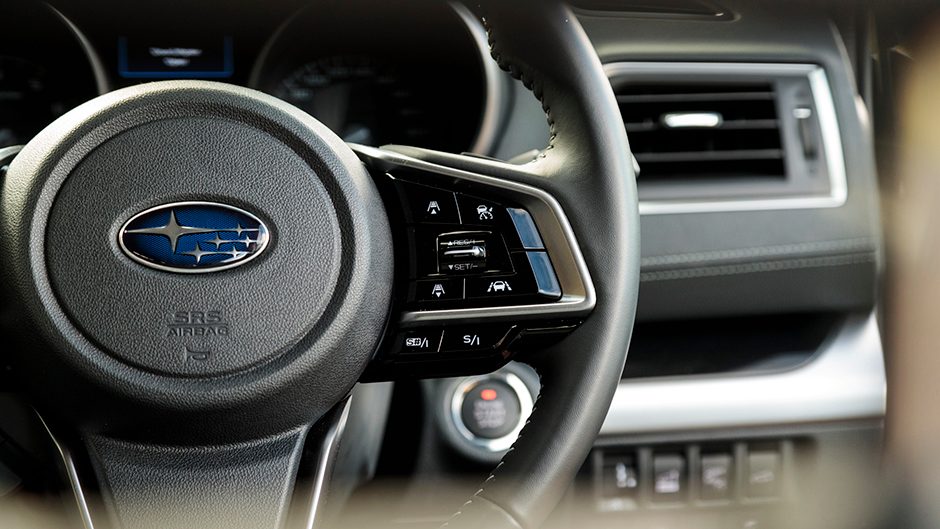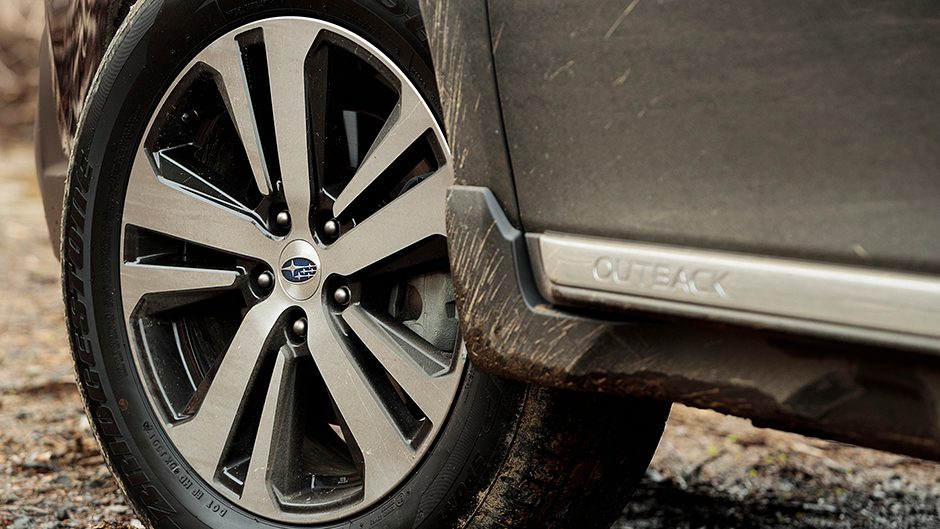2017 Holden Tourer vs Subaru Outback 3.6R Premium comparison
Words Peter Louisson | Photos Tom Gasnier
Because conditions are so iffy so often here in New Zealand, you can’t blame buyers for demanding the security of AWD. Here we compare a couple of like-priced all-paw wagons with slightly different approaches.
Appropriate that we’re testing a couple of locked and loaded wagons at this time of the year for during our week with them it rained most of the time. And they’re both set up to deal with adversity, especially the Outback which sports ground clearance of 213mm. Though even that’s not enough to deal to downpours around the Tolaga Bay area. By contrast, the new Commodore Tourer offers only 105mm of ground clearance, 20mm more than the Sportwagon, and it’s this difference that differentiates them, not just visually.
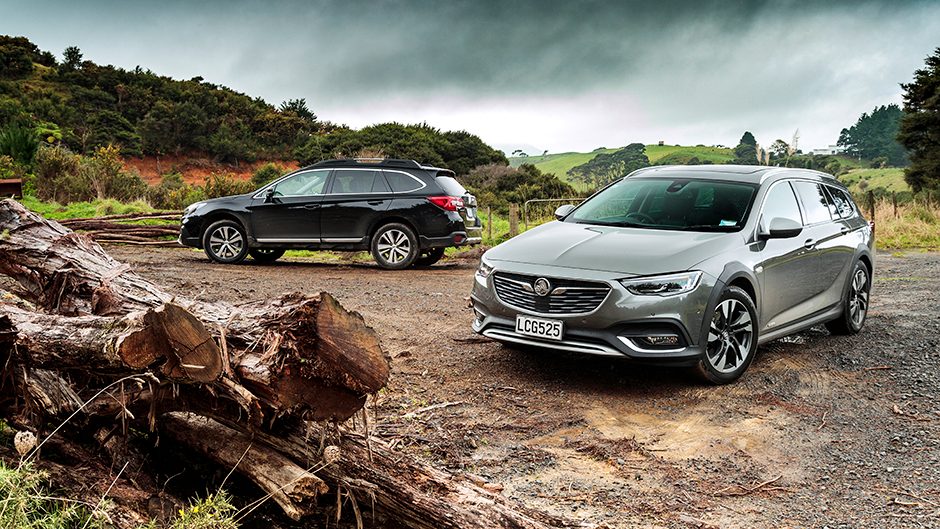
The tyres tell the rest of the story, Duelers on the Outback, ContiSportContact 5s for the Tourer. So essentially you’ve got your bona fide dual purpose wagon in the Subaru and a kind of faux lookalike version with plastic cladding in the Tourer. One’s essentially 4WD optimised for the road, and will deal with gravel well enough, while the other with its ground clearance, gnarly rubber and X-mode optimising off-road performance will have a proper attempt at going bush. It just so happens, however, that they are both utterly dazzling to drive on regular roads in wet conditions, especially the Tourer with its more road-oriented rubber and tricky rear differential but we’re getting ahead of ourselves a bit here.
Apples to apples?
These two, like the sedans we featured a couple of months ago (Legacy RS vs Calais-V) are relatively close competitors if you’re strictly comparing them on size and price. While the lone Tourer we get here is a well specified Calais variant costing $65,990, the premium Outback 3.6R is $59,990. However, the Tourer has more kit – as standard it gets a double moon roof, wireless charging, adaptive matrix LED lights, colour head-up display, gesture opening for the fifth door, a proper nine-speed gearbox and the extra kit easily accounts for the $5k difference in price.
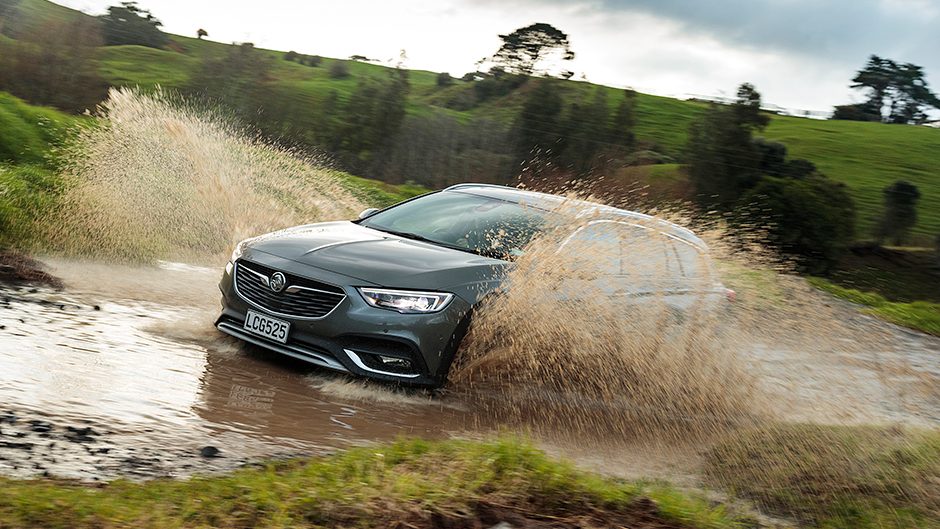
Bear in mind also that while these both share a 3.6-litre six-cylinder engine and AWD status that’s about the only commonality. The Outback has a longitudinal flat six while the Holden utilises a V6 with its crank inline with the axles. If you took a quick glance under the Tourer’s bonnet the plastic shroud atop the engine suggests there’s a longitudinal engine beneath with a couple of banks oriented north-south. Buyers spending this much on a car know full well it’s Insignia-based, and therefore which way the engine points.
Once you get over the attempt at subterfuge, the numbers tell the real story. It’s a bit of a brute this, with VVT and direct injection, kicking out a burly 235kW and 381Nm. Despite the natural aspiration, there’s great energy from 2000rpm onwards, even on the open road. It almost feels turbocharged in its low-rev demeanour. Holden rates the 3.6 at 9.1L/100km overall and without trying we averaged 10.3L/100km in a mix of town, motorway and country running. It will do low 7s at 100km/h on cruise control. You get surprising performance for all that, due in part to the nine-speed automatic transmission.

What about the top Outback then? The flat six is more laid-back in its operation, generating 191kW and 350Nm, but in syrupy fashion. You thought a V6 was liquid? The power from this you could pour. Most of the time the engine’s inaudible too. But with the Outback’s upright stance, economy was no better overall than that of the Tourer.
Transmissions less different than you’d think
The radically different transmission approaches in the scheme of things don’t really make that much of a driving difference. The Subaru outputs its power via a CVT. Most of these do an efficient job, which is like damning them with faint praise. Subaru’s unit is a bit different in that the engineers have bothered to do the development hard yards and it makes the most of its sweet power train, though it depends on the drive mode you’ve chosen.
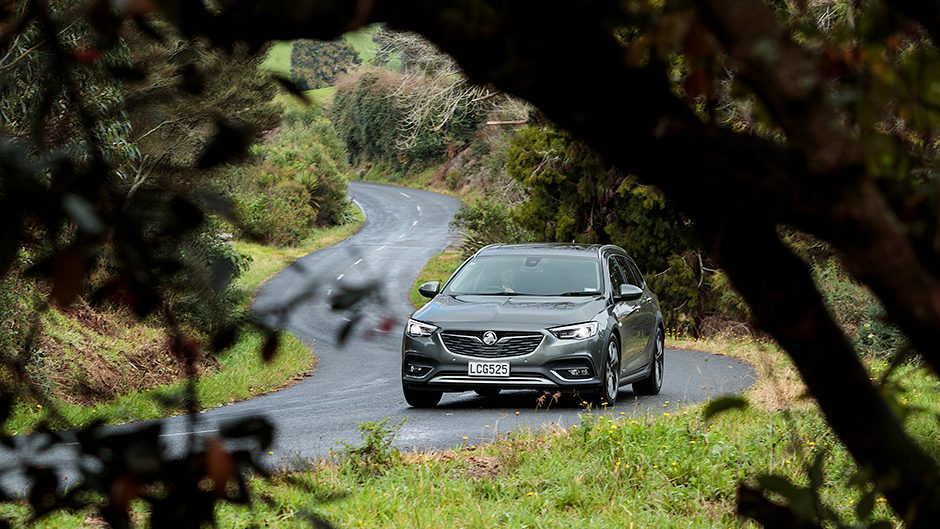
Where the Holden has merely a sport button which initially you might think does nothing much at all, the Outback has Sport and Sport Sharp alternatives, each ramping the action palpably. Both cars drive in imperious fashion even just using the Normal mode and we imagine some drivers might try the Tourer in Sport once and never bother again, especially if economy is important. But in the Subaru the Sport settings really are an excellent compromise between a spot of cruising and bruising.
As with the sedans we tested both these wagons are pretty hasty, the Commodore particularly so. It gets off the line better than the Subaru with its CVT, and whistles to one hundred in 6.3sec, a few tenths better than when we tested the Calais V, again because of cooler testing conditions.
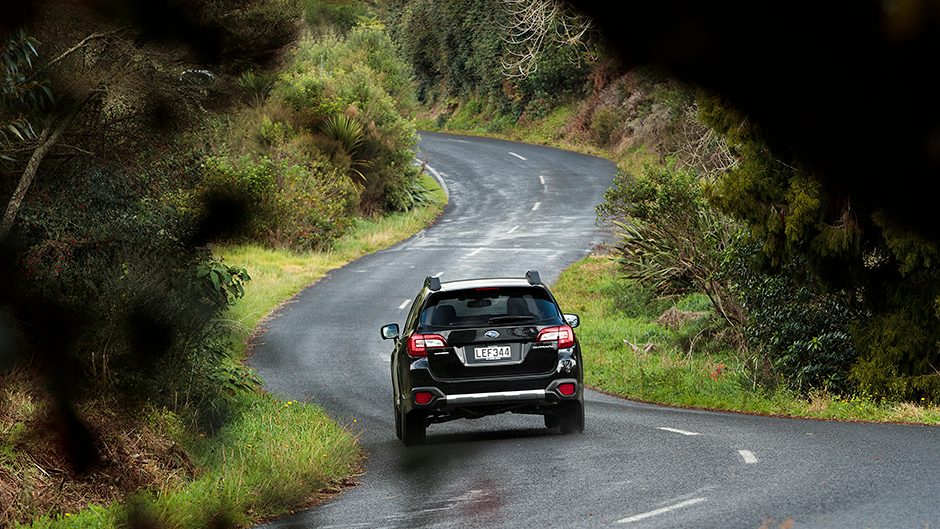
We couldn’t repeat that with the Subaru, but it ended up roughly a second slower on both criteria we measure. Differences about what you’d expect then given the power advantage. We’d not put too much stock in the 38+m stopping distances, given damp conditions for testing.
Dynamic duo
What really didn’t surprise was how sticky these two are on damp and wet roads. Not that you want to be pushing on in such conditions, but the security afforded by these two is almost surreal. And it’s the Commodore that gets the upper hand thanks to its Twinster rear differential. At the local launch event for Commodore, the chief engineer of the programme said ‘you won’t credit how good this car is in the wet’, and now we can say he wasn’t wrong. Having lots of (moderately) low profile rubber helps, the 235/50R18 Contis doing sterling work in wet conditions.
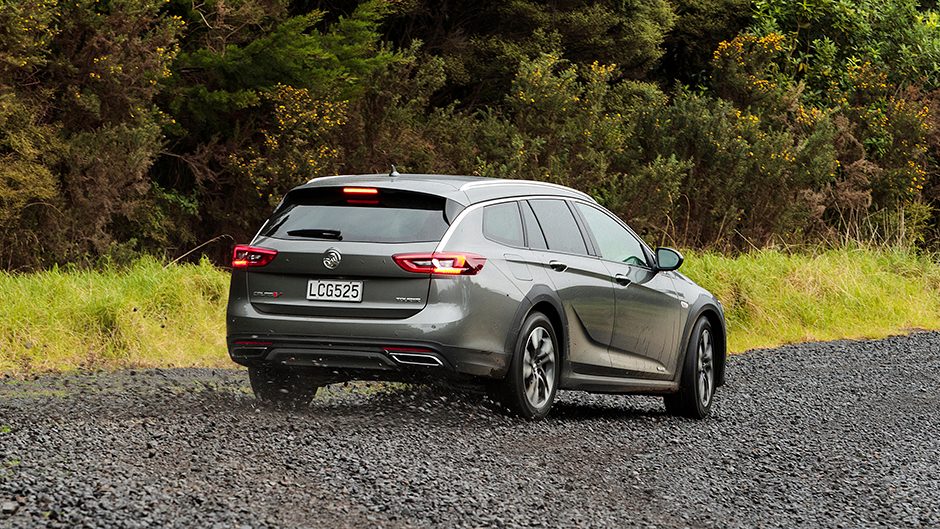
So does a decent weight balance of 56/44 but it’s the torque shuffling rear diff that does the business. This can apportion all of the available rearward flowing torque to either rear wheel. What that means is any incipient understeer can easily be countered by adding a whiff of gas, and that works even in damp conditions. If you’re in the Subaru, there’s less grip to begin with (though the recent improvement in the Bridgestone Dueler’s wet weather performance is nothing short of remarkable) and any widening of the cornering line can only be rectified by buttoning off.
What’s also rather remarkable about the Tourer is its ride quality. They’ve softened it off slightly compared with the sedans but not so much that it becomes untidy. While it cannot compete with the Outback’s ability to mop up road irregularities – the Subaru’s long travel suspension is unrivalled in this area – it would be churlish to complain about ride quality. Okay, after a few hours at the wheel you’re aware of where the squab is, but you can always turn on the seat massager which takes your mind off things. Pity about your front seat passenger but both of you get three-way seat heating and ventilation.
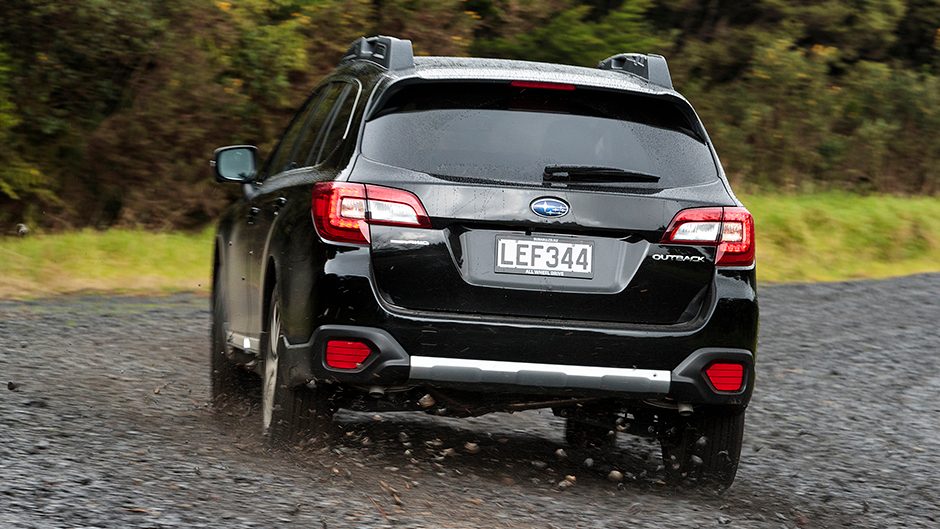
If there’s anything dynamically about the Tourer we’d like to see improved it’s probably the brakes which function fine but haven’t quite the pedal modulation of the Subaru.While on things not so great in the Holden, it convincingly loses the door shutting comparison, its thunk not a patch on the clunk of the Subaru. As to road noise, the tables turn; we simply couldn’t get SPL readings of above 67dB in the Tourer, whereas the Subaru average was 2dB higher. Go figure; aurally you’d be hard pushed to tell any difference.
Tourer bigger and it feels that on road
While the Subaru switchgear and instruments are hardly a model of modernity, the centre console area is sited closer with bigger controls easier to decipher than the distant, smaller buttons on the Holden. Round the back, the gesture control works every time on the Holden, more reliable than its key fob for opening the fifth door, whereas the Subaru’s powered tailgate didn’t always raise on command when using the latch, best to use the remote.
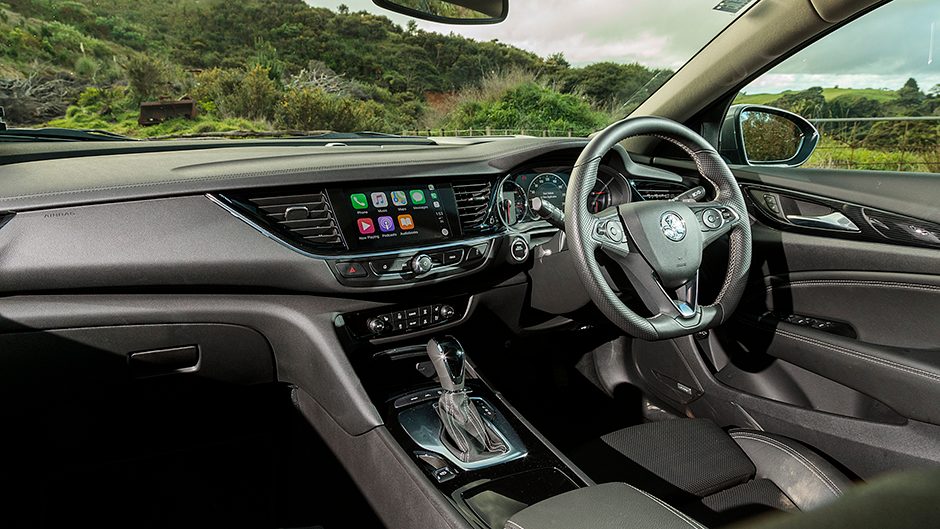
Both have generous luggage space, 560L in the Tourer, 512 in the Outback, the latter explained by its smaller external dimensions. The Tourer is a tich over 5m in length, the Subaru just over 4.8m and it’s a similar story for width, 1840 vs 1871mm. On road, the Tourer feels bigger while the Outback is easier to place. They both steer well though, thanks to modern electric helms and each points enthusiastically into the turn.
There’s very little in the way of drive corruption up front from either vehicle. A bit more steering effort is required in the Tourer when in Sport mode and given the difference in performance is modest, we stuck to Normal most of the time. It’s still particularly responsive in this mode, the transmission making multiple downshifts seamlessly, for the most part. In the Subaru you just get more revs as throttle demands increase, though it performs mock upshifts during heavy acceleration.
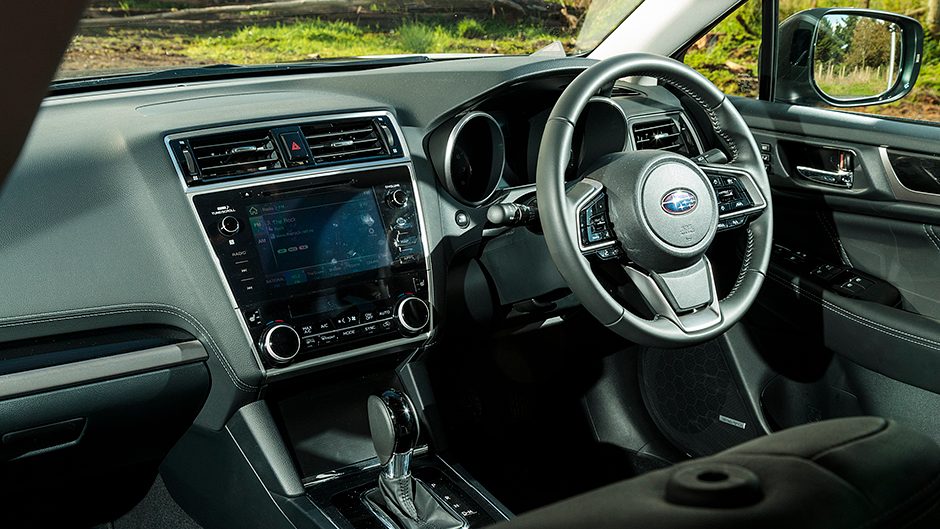
Which then?
Visually, there’s no competition here, the Insignia-based Tourer a predator where the Outback looks like the jacked-up wagon it is. Not that the Outback doesn’t come into its own when the going gets tough. And it’s simply adept at doing it all.
The Tourer is what it says it is, and performs flawlessly at that task. Traditional Holden fans might be bagging new Commodore because it’s not Australian, and it’s based on a front-drive Euro but without driving it they’ll never know what they’re missing out on; the most agile Commodore yet.
Both are superb drives. Pick the Commodore for style and all the mod cons, the Subaru if you’re a proper adventurer.
| Model | Holden Tourer |
| Price | $65,990 |
| Engine | 3649cc, V6, T/DI, 235kW/381Nm |
| Drivetrain | 9-speed auto, all-wheel drive |
| Fuel Use | 9.1L/100km |
| C02 Output | 212g/km |
| 0-100km/h | 6.32sec |
| Weight | 1752kg |
| Model | Subaru Outback 3.6R Premium |
| Price | $59,990 |
| Engine | 3630cc, flat 6, T/DI, 191kW/350Nm |
| Drivetrain | CVT, all-wheel drive |
| Fuel Use | 9.9L/100km |
| C02 Output | 230g/km |
| 0-100km/h | 7.45sec |
| Weight | 1719kg |


